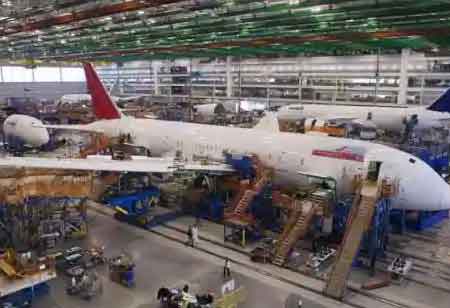THANK YOU FOR SUBSCRIBING
THANK YOU FOR SUBSCRIBING

By
Logistics Transportation Review | Wednesday, June 28, 2023
Stay ahead of the industry with exclusive feature stories on the top companies, expert insights and the latest news delivered straight to your inbox. Subscribe today.
Temperature-controlled transportation is a critical component of the logistics and transportation industry, enabling the safe and efficient movement of temperature-sensitive goods.
FREMONT, CA: The safe and efficient movement of temperature-sensitive goods is paramount in logistics and transportation. Maintaining precise temperature conditions throughout the supply chain is critical to preserving product integrity, from perishable food items to pharmaceuticals and chemicals. In this article, we explore the significance of temperature-controlled transportation and how it revolutionizes the logistics industry, ensuring the delivery of goods in optimal condition.
1. The Importance of Temperature Control: Temperature control plays a vital role in preserving temperature-sensitive goods' quality, safety, and efficacy. Certain products, such as fresh produce, frozen foods, vaccines, and biologics, require specific temperature ranges to maintain their desired characteristics. Deviations from the optimal temperature conditions can result in spoilage, loss of potency, or even compromise the safety of the products. Temperature-controlled transportation provides the necessary infrastructure and technologies to maintain these critical temperature conditions throughout the supply chain.
1. Specialized Equipment and Infrastructure: Temperature-controlled transportation relies on specialized equipment and infrastructure to regulate and monitor temperature conditions. Refrigerated trucks, containers, and warehouses are designed with advanced cooling systems to maintain precise temperature ranges. These facilities often incorporate insulation, airflow management, and real-time monitoring systems to ensure consistent and controlled environments for the transported goods. Such infrastructure is crucial for preserving temperature-sensitive products' quality and shelf life.
2. Technology-enabled Monitoring and Tracking: Advancements in technology have significantly improved temperature-controlled transportation capabilities. Real-time monitoring and tracking systems enable logistics providers to closely monitor temperature conditions during transit. Wireless sensors, data loggers, and telematics devices allow for continuous temperature, humidity, and other environmental factors monitoring. This data can be accessed in real-time, enabling prompt intervention if any deviations occur. Such visibility and control enhance product safety and enable swift corrective actions in case of temperature excursions.
3. Regulatory Compliance and Quality Assurance: Temperature-controlled transportation is subject to stringent regulatory requirements, especially in industries such as pharmaceuticals and healthcare. Regulatory agencies set temperature control, record-keeping, and documentation standards to ensure product safety and efficacy. Logistics providers specializing in temperature-controlled transportation adhere to these regulations, implementing robust quality assurance processes and documentation practices. By doing so, they provide customers with peace of mind, assuring them that their products are handled and transported in compliance with industry regulations.
4. Cold Chain Management: Temperature-controlled transportation is integral to the larger cold chain management process. Cold chain management encompasses the entire journey of temperature-sensitive products from manufacturing to delivery. It involves maintaining the required temperature conditions at every stage, including storage, handling, loading, transportation, and unloading. Effective cold chain management ensures product integrity, reduces waste, and minimizes business financial losses. Temperature-controlled transportation is a crucial link within the broader cold chain, providing seamless and reliable temperature control during transit.
5. Ensuring Customer Satisfaction: Temperature-controlled transportation plays a significant role in ensuring customer satisfaction and brand reputation. Businesses that transport temperature-sensitive goods rely on logistics providers to deliver products in pristine condition. Organizations can meet customer expectations for product quality, reliability, and on-time delivery by partnering with reputable temperature-controlled transportation services. The ability to consistently deliver goods in optimal condition helps build trust and strengthens customer relationships, paving the way for long-term success.
Conclusion: Temperature-controlled transportation is a critical component of the logistics and transportation industry, enabling the safe and efficient movement of temperature-sensitive goods. With specialized equipment, advanced monitoring technologies, and adherence to regulatory standards, logistics providers ensure that products remain within the desired temperature ranges throughout the supply chain. By doing so, they protect product integrity, enhance customer satisfaction, and contribute to the success of the food, pharmaceutical, and healthcare industries. As technology advances, temperature-controlled transportation will evolve, further revolutionizing the logistics landscape and reinforcing the reliability of the global supply chain.
I agree We use cookies on this website to enhance your user experience. By clicking any link on this page you are giving your consent for us to set cookies. More info





